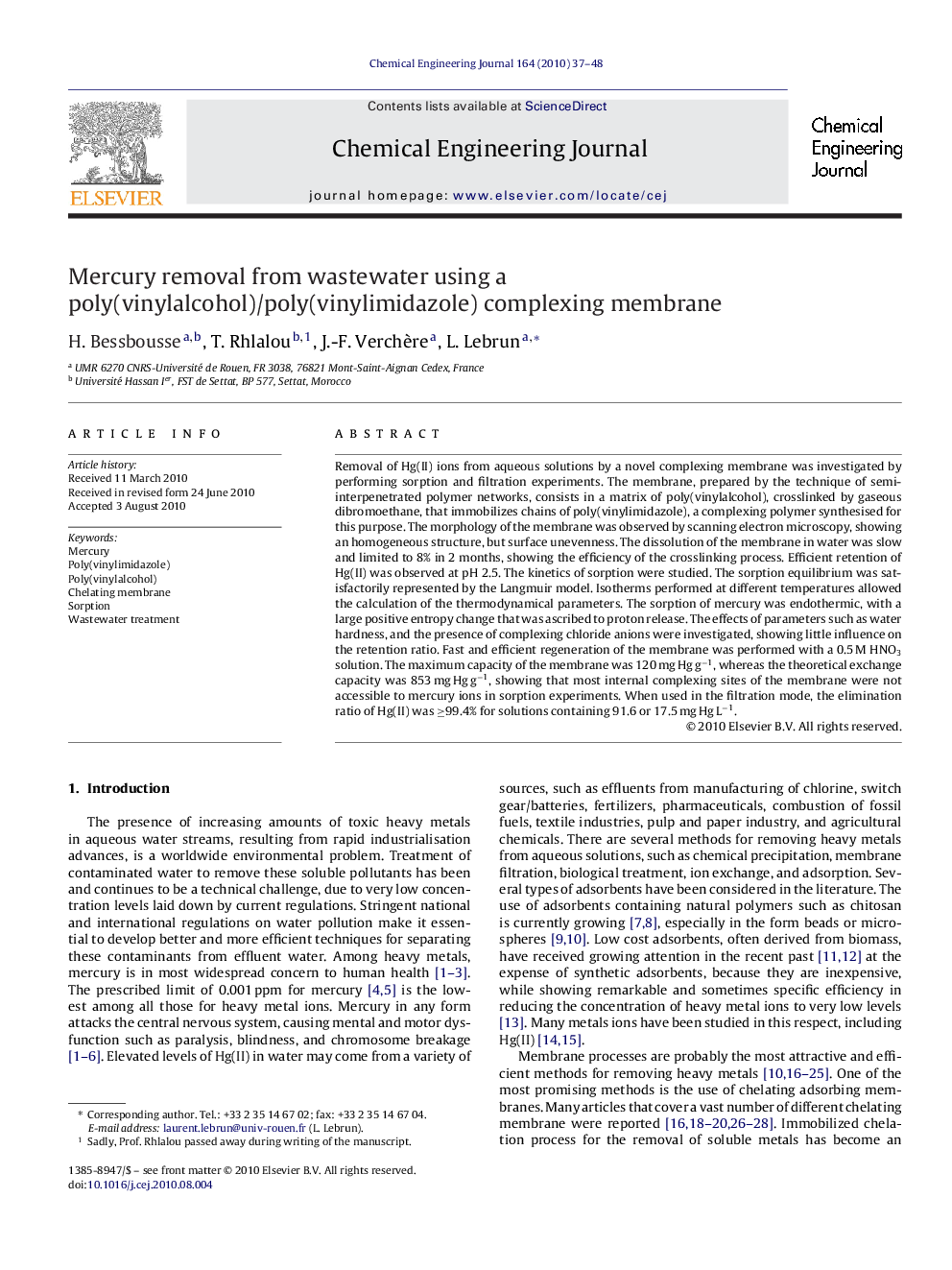| کد مقاله | کد نشریه | سال انتشار | مقاله انگلیسی | نسخه تمام متن |
|---|---|---|---|---|
| 151925 | 456483 | 2010 | 12 صفحه PDF | دانلود رایگان |

Removal of Hg(II) ions from aqueous solutions by a novel complexing membrane was investigated by performing sorption and filtration experiments. The membrane, prepared by the technique of semi-interpenetrated polymer networks, consists in a matrix of poly(vinylalcohol), crosslinked by gaseous dibromoethane, that immobilizes chains of poly(vinylimidazole), a complexing polymer synthesised for this purpose. The morphology of the membrane was observed by scanning electron microscopy, showing an homogeneous structure, but surface unevenness. The dissolution of the membrane in water was slow and limited to 8% in 2 months, showing the efficiency of the crosslinking process. Efficient retention of Hg(II) was observed at pH 2.5. The kinetics of sorption were studied. The sorption equilibrium was satisfactorily represented by the Langmuir model. Isotherms performed at different temperatures allowed the calculation of the thermodynamical parameters. The sorption of mercury was endothermic, with a large positive entropy change that was ascribed to proton release. The effects of parameters such as water hardness, and the presence of complexing chloride anions were investigated, showing little influence on the retention ratio. Fast and efficient regeneration of the membrane was performed with a 0.5 M HNO3 solution. The maximum capacity of the membrane was 120 mg Hg g−1, whereas the theoretical exchange capacity was 853 mg Hg g−1, showing that most internal complexing sites of the membrane were not accessible to mercury ions in sorption experiments. When used in the filtration mode, the elimination ratio of Hg(II) was ≥99.4% for solutions containing 91.6 or 17.5 mg Hg L−1.
Journal: Chemical Engineering Journal - Volume 164, Issue 1, 15 October 2010, Pages 37–48